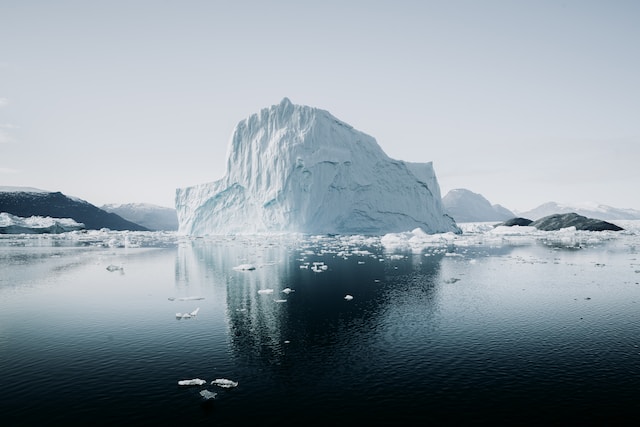Ice sheets can collapse into the ocean in spurts of up to 600 metres (2,000 feet) a day, a study has found, far faster than recorded before.
Scientists said the finding, based on sea floor sediment formations from the last ice age, was a “warning from the past” for today’s world in which the climate crisis is eroding ice sheets.
They said the discovery shows that some ice sheets in Antarctica, including the “Doomsday” Thwaites glacier, could suffer periods of rapid collapse in the near future, further accelerating the rise of sea level.
The rising oceans are among the greatest long-term impacts of global heating because hundreds of major cities around the world are on coastlines and are increasingly vulnerable to storm surges and flooding. The West Antarctic ice sheet may already have passed the point at which major losses are unstoppable, which will lead eventually to metres of sea level rise.
“Our research provides a warning from the past about the speeds that ice sheets are physically capable of retreating at,” said Dr Christine Batchelor at Newcastle University in the UK, who led the research. “It shows that pulses of rapid retreat can be far quicker than anything we’ve seen so far.”
“These pulses translate into sea level rise and could be really important for sea defences,” she said. The rate of loss was critical if, for example, a rise expected over 200 years could actually occur in 20 years, Batchelor said. The research could also be used to enable computer models to make better predictions about future ice loss.
Most previous estimates of the rate of ice sheet collapse have come from satellite data, which has been collected for about 50 years. The geological data used in the study stretches back thousands of years, allowing a much greater range of conditions to be analysed.
The research, published in the journal Nature, used high-resolution mapping of the sea bed off Norway, where large ice sheets collapsed into the sea at the end of the last ice age 20,000 years ago. The scientists focused on sets of small ridges parallel to the coast, which formed at the line where the base of the ice sheet met the oceans, called the grounding line.
As the tides lifted the ice sheets up and down, sediments at the grounding line were squashed into ridges twice a day. As the base of the ice sheet melted over days and weeks, the grounding line retreated towards the shore, leaving behind sets of parallel ridges. Measuring the distance between the ridges enabled the scientists to calculate the speed of the Norwegian ice sheet collapse.
They found speeds of between 50 metres a day and 600 metres a day. That is up to 20 times faster than the speediest retreat recorded previously by satellites, of 30 metres a day at the Pope Glacier in West Antarctica. Ridges had been studied before, in Antarctica, but only over an area of 10 sq km. The new study covered an area of 30,000 sq km, and 7,600 ridges, allowing the scientists to understand what is likely to control the rates of retreat.
The fastest rates of ice sheet loss to the ocean were found where the ice sheet had been resting on a virtually flat sea bed. This is because a relatively small amount of melting at the base of a flat-bedded ice sheet can lift a large section of the sheet and shift the grounding line much further inshore than if the sheet was on a steeper slope.

